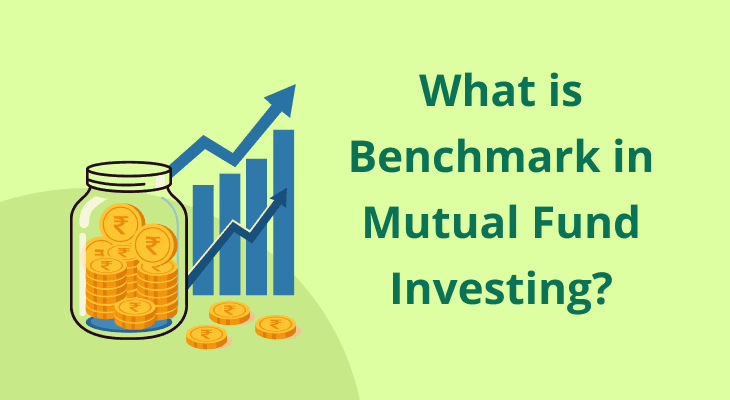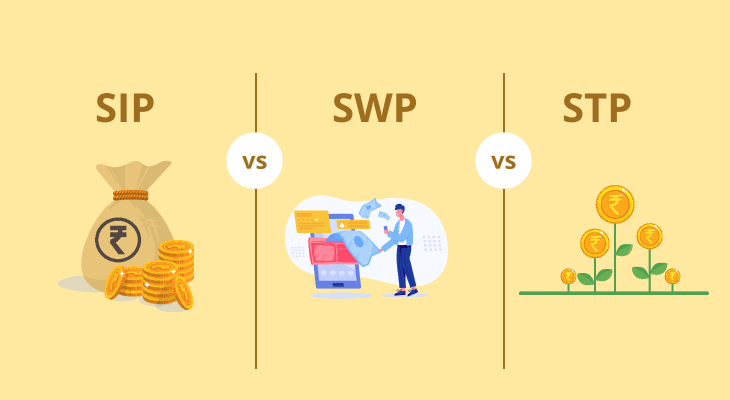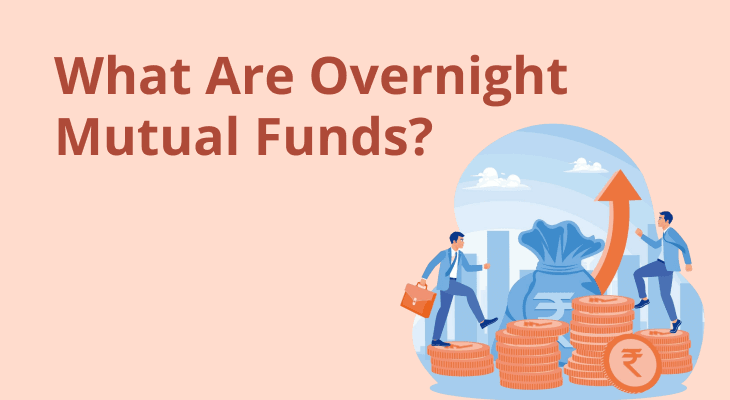
Table of content
What are Debt Funds: All about Debt Funds
If you’re looking for a market-linked investment option that’s not as risky as equity but has the potential to deliver moderate returns, debt instruments may just be the one for you. One of the best ways to invest in these instruments is through debt mutual funds. They’re easy to invest in, offer much stabler returns and reduce your portfolio risk through diversification.
If you’re new to debt funds or are unaware of what they are, here’s a comprehensive guide on everything you need to know about these funds.
What are Debt Funds?
Debt funds are mutual funds that use the money pooled from investors to invest in a wide range of debt instruments of varying tenures. Some of the debt instruments that these funds invest in include corporate bonds and debentures, government bonds and money market instruments like Commercial Papers (CPs) and Certificates of Deposits (CDs).
Benefits of Investing in Debt Funds
Debt funds offer a multitude of different advantages. Let’s take a closer look at some of the key benefits of this investment option.
Stable Returns
As you now know, debt mutual funds invest in debt instruments, which are fixed-income securities. These securities provide you with a steady source of income by way of interest payments throughout the entire tenure. By investing in such funds, you can create a stable source of income which is not the case with equity funds.
Portfolio Diversification
Diversification is a technique where you invest in different investment options and asset classes to bring down risk. Debt funds enable you to achieve just that. If your portfolio primarily consists of equity instruments, investing in debt funds can help reduce risk through diversification.
Lower Risk
The returns from equity funds are heavily dependent on market performance. However, that’s not the case for debt mutual funds. Since they consist of fixed-income securities, you would get interest payments from your investments irrespective of how the market moves.
Types Of Debt Funds
One of the major advantages of debt funds is that you get the freedom to choose the kind of fund that you wish to invest in. For instance, if you wish to go by the investment horizon, you have short-term and long-term funds to choose from. Alternatively, if you wish to go by the kind of debt instruments the funds invest in, you have money market funds, gilt funds and corporate bond funds, among others.
Risks Associated with Debt Funds
Debt funds are not completely free from risk. In fact, there are four major risks that you need to factor in when investing in such a fund. Here’s a brief overview of these risks.
Interest Rate Risk
When the interest rates in the market rise, the value of bonds goes down. The interest rate risk is defined as the possibility of the interest rates rising after you invest in debt funds, leading to a fall in the Net Asset Value (NAV).
Credit Risk
Debt funds also invest in corporate bonds. The possibility of the company defaulting on its interest or principal payments is known as credit risk. Funds that invest in high-risk corporate bonds often have higher credit risk.
Inflation Risk
Inflation risk is the possibility of the returns from your debt fund being lower than the rate of inflation. Debt funds with low-yield bonds, despite being safer to invest, often have higher inflation risk.
Liquidity Risk
Liquidity risk is the possibility of not being able to sell the units of the debt mutual fund in the market. Debt funds that invest in high-risk bonds and unlisted and illiquid debt instruments have higher liquidity risk.
How to Choose The Right Debt Fund?
With so many debt mutual funds in the market, it is important to choose the right fund to invest in. Here are a few factors that you can consider when evaluating debt funds.
Risk Tolerance
The ability to tolerate risk varies from one investor to another. Therefore, it is one of the primary factors you need to consider when selecting a debt fund. The credit and risk profile of the fund should always match your risk tolerance.
For instance, if your risk tolerance levels are low, consider investing in gilt funds since they don’t have any credit risk. Alternatively, if you have a high-risk tolerance, you may choose to invest in credit opportunities funds. These funds invest in lower-rated debt instruments but offer higher returns.Investment Horizon
The period of investment is another major factor that you need to consider. You should always invest in a debt fund with tenures that match the number of years you wish to stay invested. For instance, if you don’t plan on holding your investments for more than a year, short-term debt mutual funds like money market funds may be what you’re looking for. On the other hand, if you’re willing to stay invested for a few years, you may consider investing in long-term debt funds.
Interest Rate Expectations
How you expect the interest rates to fare in the future should also be taken into consideration when evaluating a debt fund. If you expect the interest rates to rise in the future, you may want to invest in short-term or liquid funds. Alternatively, if you expect the interest rates to fall, investing in long-term funds may be the right way to go.
How to Make Debt Fund Investments?
Investing in debt mutual funds is simple and can be done online or offline through various channels. Here’s a step-by-step guide to help you get started:
- Choose the right platform: You can invest via your bank, a mutual fund distributor, AMC websites, or reputed online platforms like m.Stock by Mirae Asset.
- Set investment goals: Decide your objective such as safety of capital, short-term income, or long-term stability.
- Select the debt fund type: Choose based on your risk appetite and investment horizon (e.g., liquid, short duration, gilt, corporate bond).
- Choose investment mode: You can start a SIP (Systematic Investment Plan) or make a lump sum investment.
- Complete KYC: Ensure you are KYC-compliant before investing. You’ll need to submit PAN, Aadhaar, and other details.
- Track and review: Monitor your investments regularly and rebalance if needed.
It is important to note here that direct investment in debt funds, something that platforms like m.Stock offer, incur zero commission which lets you retain more of your net returns.
Who Needs to Invest in Debt Mutual Funds?
Debt mutual funds can play a strategic role in various investment portfolios. They are especially useful for individuals with the following profiles:
- Conservative investors seeking lower volatility and predictable returns.
- Senior citizens or retirees looking for stable income with low capital risk.
- First-time mutual fund investors who prefer a less risky entry point.
- Investors with short to medium-term goals like home renovation or a planned expense in 1–3 years.
- Those diversifying their equity-heavy portfolios to reduce overall risk.
Why Invest in Debt Mutual Funds?
Debt funds offer multiple advantages beyond just capital protection. If you’re wondering why you should consider them, here are some reasons:
- Stable returns: These funds generate steady income by investing in interest-bearing securities.
- Lower volatility: Compared to equity funds, debt funds experience less fluctuation.
- Tax efficiency: Debt funds offer indexation benefits for long-term investors, potentially reducing tax liability.
- Flexible tenure options: You can choose from overnight to long-duration funds depending on your goals.
- Liquidity: Most debt funds can be redeemed quickly, especially liquid and ultra-short duration funds.
- Better than traditional options: Often offer better post-tax returns than bank savings accounts or fixed deposits.
Factors to Consider Before Investing in Debt Mutual Funds
While debt funds are considered relatively safe, they come with their own risks and considerations. Before investing, make sure to evaluate the following:
- Interest rate risk: Bond prices are inversely related to interest rates. Longer duration funds are more sensitive to rate changes.
- Credit risk: Some debt funds invest in lower-rated securities that offer higher returns but carry the risk of default.
- Investment horizon: Match the fund’s duration profile with your expected holding period to avoid premature exit.
- Expense ratio: Lower costs improve overall returns; compare funds on this basis.
- Exit load and lock-in: Some funds may charge exit loads if redeemed early. Check fund terms carefully.
Tax implications: As of 23rd July 2024, gains are taxed based on your existing individual tax slab rate, irrespective of the holding period .
Conclusion
With this, you must now be aware of what debt funds are and their benefits and risks. Investing in debt funds is a great way to get stable and consistent returns. However, you should keep in mind that the returns are not always guaranteed.
Wish to invest in debt mutual funds? m.Stock’s trading and investment platform allows you to invest in a wide range of debt and other mutual funds in just a couple of clicks. Furthermore, you can even get up to 1% extra returns on direct mutual fund investments you make through m.Stock.
SIPs let you invest small amounts regularly, making it easier to stay consistent with your goals. With time, your money grows faster through compounding, helping you get the most out of your investments. Try our SIP Calculator to see how your money can grow and make smarter plans for your future.
FAQ
How exactly do debt funds generate returns?
Debt funds earn returns primarily through the interest income generated by their underlying instruments like bonds, treasury bills, or government securities. Additionally, capital gains can arise if the fund manager sells a bond at a higher price due to favourable interest rate movements.
Are debt funds a better alternative than fixed deposits?
Debt funds can offer better post-tax returns than FDs, especially for long-term investors using indexation. They are also more liquid and flexible. However, they carry market-related risks, unlike FDs which offer fixed returns. Choice depends on your risk tolerance and investment horizon.
How are debt funds taxed based on holding period?
Starting 23rd July, 2024, debt fund gains are taxed as per your income tax slab regardless of the holding period. Previously, this was the case only if they were held for less than 3 years (short-term capital gains tax). For units held beyond 3 years, long-term capital gains tax was levied at 20%. However, now, all debt fund gains are taxed as short-term capital gains at slab rate, irrespective of duration.
Should I pick debt funds over equity funds?
It depends on your financial goals and risk profile. Debt funds are better suited for short-term or conservative investors. Equity funds are ideal for long-term wealth creation with higher risk. You can use a mix of both to balance risk and returns.
Can conservative investors use debt funds for the long term?
Yes, conservative investors can use low-risk debt fund categories like gilt or banking & PSU funds for long-term investing. While they offer modest returns, they provide safety and stability. Always choose funds aligned with your risk profile and time horizon.
What key factors should I assess before choosing a debt fund?
Check the fund’s credit quality, average maturity, past performance, interest rate sensitivity, expense ratio, and fund manager track record. Also assess your own investment goal, liquidity needs, and holding period to ensure a good fit.
Do debt funds impose any lock‑in period or exit loads?
Most debt funds do not have a lock-in period, but some may impose an exit load if you redeem your investment within a specified timeframe (typically a few days to months). Always review the scheme information document for exact terms.
Are debt funds better than investing directly in corporate bonds?
Debt funds offer professional management, diversification, and liquidity that direct bond investments may lack. While direct bonds may offer higher yields, they carry higher risks and are less accessible for retail investors. Debt funds offer a more convenient and diversified route.


